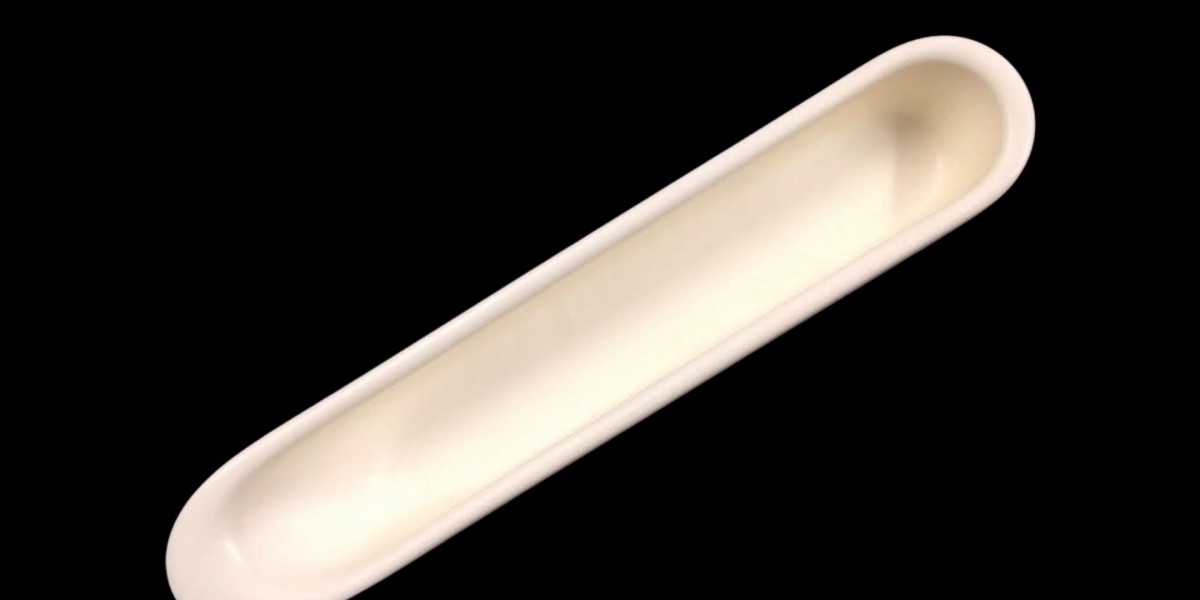When precision, cleanliness, and durability are paramount in thermal processing applications, ceramic boats stand as indispensable components in laboratories, research facilities, and industrial settings. Engineered to withstand extreme temperatures while maintaining chemical inertness and structural integrity, these vessels are foundational in processes such as semiconductor fabrication, sintering, calcination, and metallurgical assays. In this guide, we detail the best ceramic boats available on the market, their specifications, material compositions, and performance benefits in clean thermal processing environments.
What Are Ceramic Boats and Why They Matter
Ceramic boats are open-ended crucible containers crafted from high-temperature resistant ceramics like alumina (Al₂O₃), zirconia (ZrO₂), and silicon carbide (SiC). They are used to hold samples, powders, metals, or chemicals during controlled heating processes that often exceed 1000°C. A ceramic boat for tube furnace is especially designed to withstand intense thermal conditions while ensuring chemical stability and uniform heat distribution, making it ideal for applications in materials testing, sintering, and thermal analysis.
What sets ceramic boats apart is their minimal contamination risk, thermal stability, and dimensional accuracy. In cleanroom or high-purity applications, especially in electronics and materials science, they are preferred over metallic containers which may react with the process material or oxidize.
Top Features of the Best Ceramic Boats for Thermal Processing
1. High-Purity Alumina Composition
The best ceramic boats for clean thermal processing are composed of 99.7%+ pure alumina, offering exceptional thermal shock resistance, low porosity, and chemical inertness. Alumina withstands temperatures up to 1800°C, making it ideal for demanding environments.
Advantages: High melting point, non-reactive to most acids and alkalis, and corrosion-resistant.
Use Cases: Heat treatment of semiconductors, firing of electronic substrates, and catalyst testing.
2. Uniform Wall Thickness and Dimensional Stability
Superior ceramic boats feature precisely controlled geometries, with uniform wall thickness that ensures even heat distribution and prevents warping under thermal stress. These features support reproducibility in high-precision applications.
Key Metrics: Dimensional tolerance of ±0.1 mm; wall thickness between 1.5–4 mm depending on the size and material.
3. Low Contamination and High Cleanliness
For applications such as MEMS fabrication, photovoltaic cell production, or analytical chemistry, contamination control is crucial. Top-tier ceramic boats are manufactured in ISO class cleanrooms and are pre-cleaned using ultrasonic deionized water baths.
Packaging: Vacuum-sealed, dust-free environments to ensure zero-particle contamination on delivery.
Certification: Traceable batch certification for purity and particle levels.
Best Ceramic Boats Available on the Market
CoorsTek High-Purity Alumina Ceramic Boats
Material: 99.8% Al₂O₃
Temperature Resistance: Up to 1800°C
Design: Rectangular, U-shaped, or custom geometries
Applications: Oxidation studies, sintering powder metals, and clean processing of electronic components.
Notable Feature: Precision-engineered shapes that minimize dead zones during heat application and improve uniformity in thermal cycles.
Morgan Advanced Materials Zirconia Ceramic Boats
Material: Yttria-Stabilized Zirconia (YSZ)
Thermal Tolerance: 2200°C
Benefits: Superior thermal insulation properties, lower thermal conductivity than alumina, highly resistant to cracking.
Recommended For: High-temperature metallurgical experiments, rare earth metal processing, and corrosive material analysis.
Superior Technical Ceramics Silicon Carbide Boats
Material: Reaction-bonded Silicon Carbide
Operating Range: Up to 1650°C in oxidizing environments
Attributes: Excellent wear resistance, thermal conductivity, and anti-corrosion behavior.
Common Applications: Used in chemical vapor deposition (CVD) processes, graphitization, and co-fired ceramic laminates.
AdValue Technology Custom Alumina Boats
Material: High-density 99.7% Al₂O₃
Temperature Resistance: 1700°C
Customization: Offers tailor-made geometries and micro-porosity control.
Ideal For: Applications requiring bespoke shapes or channels for multi-zone thermal profiling and sample separation.
Key Selection Criteria for Ceramic Boats in Clean Thermal Processing
1. Chemical Compatibility
Always ensure the material of the ceramic boat is chemically inert with the samples and gaseous environment used during processing. Alumina is ideal for neutral and oxidizing atmospheres, while zirconia and SiC are better for reducing or vacuum conditions.
2. Mechanical Strength and Thermal Cycling
Thermal processing often involves rapid heat-up and cool-down cycles. Select ceramic boats that are resistant to thermal shock, with high flexural and compressive strength to withstand cracking or deformation.
3. Cleanroom Compatibility
For semiconductor and pharmaceutical-grade applications, ceramic boats should be:
Particle-free
Outgassed to remove adsorbed volatile organics
ISO-certified for purity and trace metals
4. Geometric Design and Load Capacity
From V-shaped boats for liquid samples to multi-compartment trays for mass testing, choosing the right shape optimizes material handling, heating uniformity, and throughput. Consider the load weight, especially when scaling up to batch furnaces.
Applications of Ceramic Boats in Modern Industries
Semiconductor Manufacturing
In wafer doping, diffusion processes, and annealing, ceramic boats are used to hold wafers or masks without introducing ionic contaminants or metallic residues.
Material Science and Research
Used in thermogravimetric analysis (TGA), differential scanning calorimetry (DSC), and crystal growth, where clean, stable containers are critical for analytical accuracy.
Metal and Alloy Testing
In foundries and powder metallurgy, ceramic boats support melting, alloying, and sintering at ultra-high temperatures while maintaining material purity.
Battery and Energy Storage R&D
For synthesis of lithium compounds, solid-state electrolytes, and cathode/anode materials, alumina and zirconia ceramic boats offer contamination-free processing.
Maintenance Tips to Prolong Ceramic Boat Life
Avoid rapid temperature changes to prevent cracking from thermal shock.
Do not overload boats with samples, as excess weight may cause deformation.
Clean thoroughly after use with non-abrasive tools and, if needed, acid cleaning followed by thorough drying.
Inspect regularly for micro-cracks or wear that could compromise structural integrity.
Conclusion
Choosing the best ceramic boats for clean thermal processing hinges on material compatibility, structural design, thermal endurance, and purity certification. Whether you're working in a semiconductor fab, a chemical lab, or a metallurgy facility, investing in high-quality ceramic boats ensures reliable, contamination-free processing that meets the stringent demands of modern industries.






